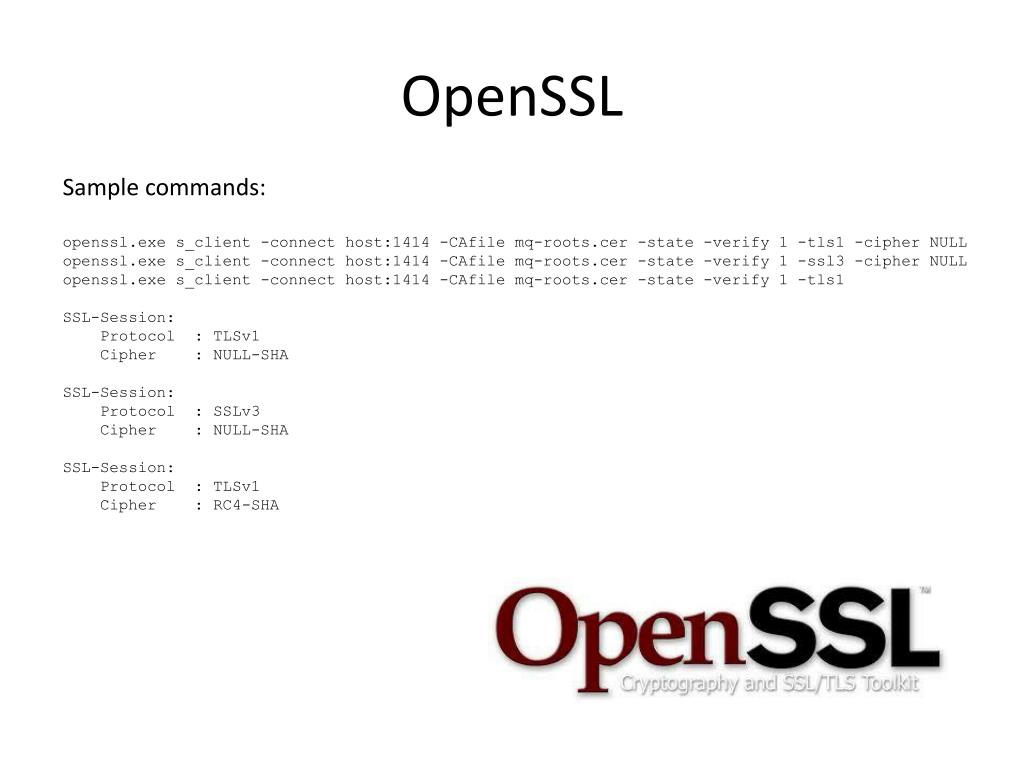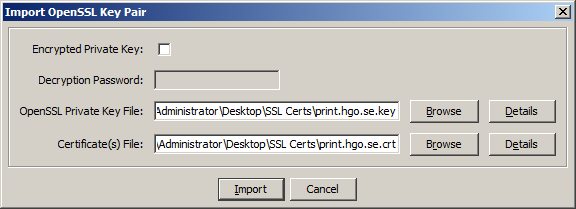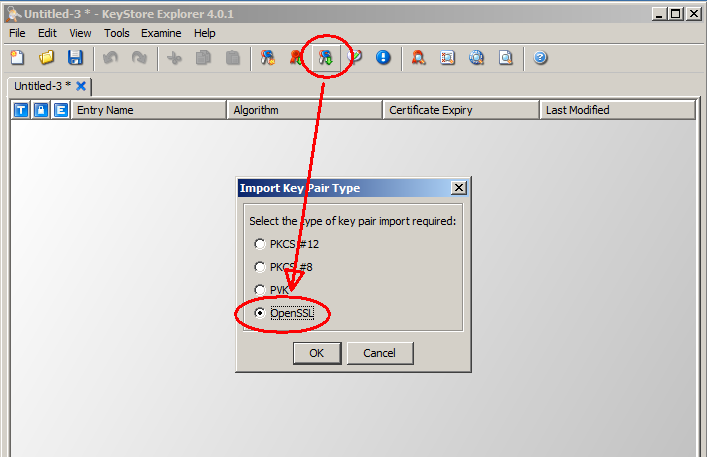

Here’s an abridged version of the sample output: MBP$ openssl s_client -showcerts -connect CONNECTED(00000003)ĭepth=2 /C=US/O=VeriSign, Inc./OU=VeriSign Trust Network/OU=(c) 2006 Check the Connection openssl s_client -showcerts -connect This command opens an SSL connection to the specified site and displays the entire certificate chain as well. Bookmark this – you never know when it will come in handy! 1. If the Web interface is inaccessible, any Web server related errors are logged to the file:Ĭ:\Program Files (x86)\EveryonePrint\logs\eopwebservice.Troubleshooting SSL certificates and connections? Here are five handy openssl commands that every network engineer should be able to use. Now you should be able to confirm the working certificate in the browser. Save the xml file and restart EveryonePrint Web Service

While we're here, we're also changing from default 9443 port to standard https port 443, so end users can enter a URL in their browser without specifying the port. In the \etc folder open the file called jetty-ssl.xml and change the keystore entries to use our new keystore file, and enter passwords in 3 places. Save the keystore file to the EveryonePrint etc folder, by default in: C:\Program Files (x86)\EveryonePrint\etc\
Openssl print certificate password#
In this example, the password "password" was chosen for both private key and keystore password.

When ready, save the keystore, and enter a keystore password. When all intermediate and root certificate files have been appended, right-click the certificate and choose View Details -> Certificate Chain DetailsĬonfirm that the chain is established, identical to the original certificate when opened directly in Windows. Start with cert-3.cer and append each one up to cert-1.cer. Right-click the certificate entry and choose Append to Certificate Chain.Īnd now we'll append all the previous intermediate certificates, starting from the "bottom" all the way up to the root, ie. cer file of the end certificate.Įnter alias that matches the "common name" or fully qualified domain of the certificate.Įnter a key password of your choice (this is used later when adding keystore to EveryonePrint). The key in this case is un-encrypted, so no key decryption password is needed, however, most often private keys are encrypted and password protected.Ĭhoose the original. Open Keystore Explorer and Create a new Keystore file of the JKS type.Ĭhoose to first Import Key Pair and choose the type OpenSSL. In this example, we'll end up with 4 separate. cer file, there is no need to copy this to file. Repeat this for other intermediate certificates. Repeat this for the other intermediate certificates in chain. Select the root certificate, click View Certificate, Details and Copy to File.Ĭhoose the format Base-64 encoded X.509 (.CER)Īnd save this top certificate as cert-1.cer. In order to import the chain of certificates into an SSL keystore for use in EveryonePrint, each certificate in the chain must be saved to a file. cer file and confirm the chain of certificates all the way from root to end certificate, which must say "This certificate is OK". cer (Security Certificate) and a private key file. In this guide, we'll go through the process of importing an existing OpenSSL based certificate into EveryonePrint consisting of a certificate file.


 0 kommentar(er)
0 kommentar(er)
